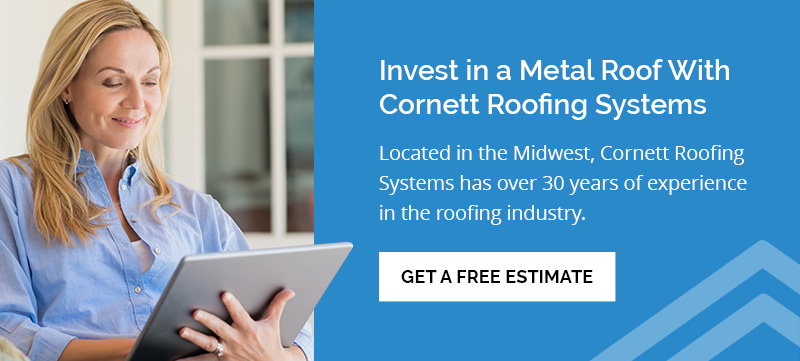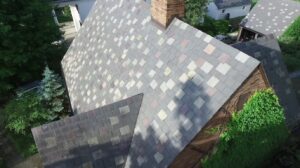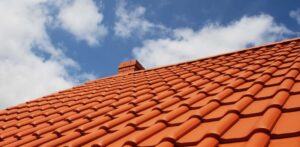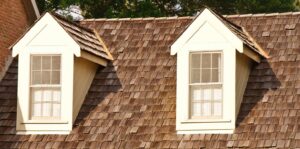Do you need to replace your building’s roof soon? If so, you may be wondering about the most energy-efficient option. Metal roofs have impressive reflectivity and emissivity qualities. Depending on your chosen color and material, a metal roof can keep your building cool and reduce HVAC costs.
In addition to being energy-efficient, metal roofing is also durable and eco-friendly. Unlike many other roofing materials, it can last 40 to 100 years and is recyclable after its use. It also has a class A fire rating and can withstand heavy rain and hailstones. You may want to invest in a metal roof if you’re looking for a durable, energy-efficient solution.
How Energy Efficient Are Metal Roofs?
You can measure a roof’s energy efficiency by considering its reflectivity and emissivity. Reflectivity is about how much of the sun’s energy a roof reflects rather than absorbs. Some roofing materials allow heat to enter the building underneath, while others act as a barrier. Roofs that reflect heat are more energy-efficient because they stabilize interior temperatures throughout the day.
Emissivity is about whether roofing materials hold onto infrared energy from the sun. Some materials stay warm for a long time, while others will quickly release any absorbed heat. When a roofing material emits infrared energy back into the air, it keeps buildings cool. The most efficient roofing systems have high reflectivity and emissivity.
A metal roof’s color significantly impacts its energy efficiency. One of the ways to measure roof efficiency is by looking at where it ranks on the solar reflectance scale. White metal roofs consistently rank at the top of the index because they reflect the most light. Other high value colors include cream and light gray. Interestingly, black metal roofs may also reflect more light than some other dark colors.
Metal makes some of the most energy-efficient roofs because of its high reflectivity and emissivity. They don’t absorb as much heat as other types of roofing, and they hold onto that heat for less time. Because metal roofs reflect heat, they can protect your building’s interior spaces from overheating and reduce your energy costs.
Do Metal Roofs Reduce HVAC Costs?
According to the Metal Roofing Alliance, metal roofing energy savings can be up to 40%. During the summer, metal’s high reflectivity will keep heat out of your home, making it easier to keep internal temperatures cool. Metal roofing is also good insulation during the winter, keeping warm temperatures inside rather than releasing them into the environment.
The best way to reduce your HVAC costs is to tightly seal your building. If there are cracks around the windows and doors, the internal temperature will escape outside and reduce energy efficiency. The same thing holds true for building materials. You can increase your building’s thermal envelope with the correct insulation and materials.
Metal roofing is an excellent way to improve your building’s seal because it fits together so well. Most metal roof components are interconnected and more stable than shingled roofs like asphalt. High-quality metal roofing undergoes testing to ensure it will hold up well against heavy rain, hailstones and strong winds. Choosing metal roofing means a better seal for your home.
Yes, metal roofs can significantly reduce HVAC costs. Their high reflectivity and emissivity ensure the energy you spend to heat and cool your building stays inside, while external temperatures stay outside. By blocking the transfer of heat energy, metal roofs seal your home and improve your entire structure’s energy efficiency.
Metal Roof vs. Shingles
Asphalt shingles are a prevalent roofing choice. They’re affordable and easy to maintain. However, this kind of roofing needs replacing about every 15 to 30 years. It also doesn’t always hold together well during bad weather — shingles can come off due to heavy winds or rainstorms. Though it’s possible to recycle asphalt shingles, they often aren’t since so many of them come off the roof over time.
Despite these drawbacks, many people choose asphalt shingles for their home or business primarily because of the price. If asphalt shingles are all you can afford, that’s a good decision. However, like buying a used car or renting an apartment, asphalt roof costs will continue adding up with time. You’ll have to replace it sooner, handle more maintenance costs and potentially address leaks from damage after storms.
By contrast, metal roofs are an investment that will continue to bring good returns to your property. According to the MRA, metal roofs increase home values by an average of 6% compared to homes with asphalt shingles. Depending on where you live, this resale value could be much higher.
Are There Energy-Efficiency Incentives for Metal Roofs?
Though metal roofing can significantly cut your HVAC costs, it is more expensive upfront than many other types of roofing. According to Forbes, installing metal roofing on a 1,700-square-foot roof costs an average of $13,200 in 2023. However, if you can afford the investment, you may never have to replace your roof again. Over the long run, metal roof energy savings will mean less money spent on your home and HVAC costs.
If you’re concerned about the initial cost, energy-efficiency incentives are available to help you pay for eco-friendly metal roofing. While the federal government used to offer a tax break for metal roofs, that option is no longer available. However, you can still check out home improvement loans and various state and local government incentives. Metal roofs tend to be more energy-efficient in warm temperatures, so these locations often have better incentives.
You can check the Cool Roof Rating Council to find energy-efficient roof incentives near you. If you don’t see anything in your area, consider reaching out to individual agencies to learn more about their programs. Energy incentives change frequently, and many options are available to help make investing in an eco-friendly metal roof more accessible for you.
Depending on where you live, your area may require energy-efficient or “cool” roofs for homes or businesses. You can learn more about these codes and standards by visiting the Cool Roof Energy Star website. A cool roof consists of a material that keeps the temperature of the roof and its underlying structure cool. Metal is one of several materials in this category.

Invest in a Metal Roof With Cornett Roofing Systems
Are you ready to purchase the last roof you’ll ever need? Located in the Midwest, Cornett Roofing Systems has over 30 years of experience in the roofing industry. Our beautiful, durable roofing products include metal, copper, tile and slate. We have a reputation for stellar customer service and are passionate about protecting the environment.
Reach out to us for a free estimate today!





